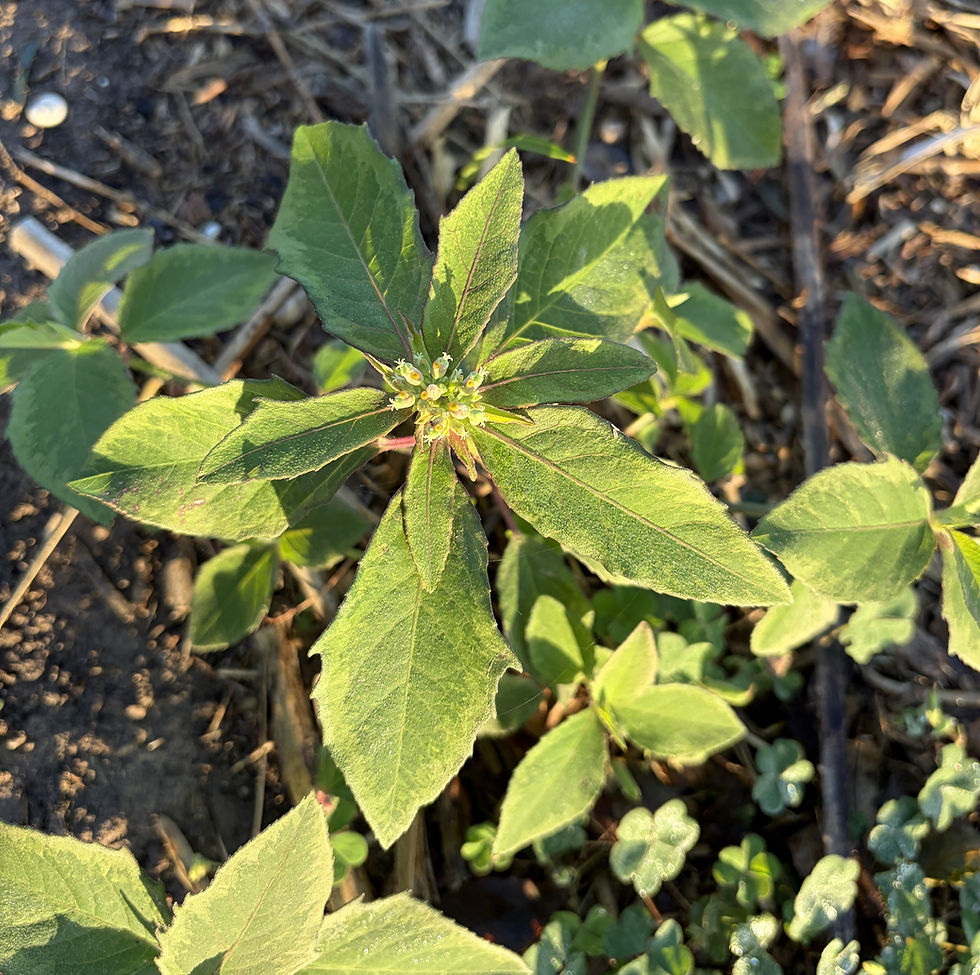“. . . a daisy a day dear"
- jjvanm
- Mar 18, 2024
- 3 min read

Published March 17, 2024 in the McAllen Monitor
Story and photos by Anita Westervelt, Texas Master Naturalist
What better harbinger of spring than golden daisies bobbing in the breeze, giving a cheery nod to early morning gardeners savoring a morning cup of coffee?
Not just any daisy, but a hardy, low maintenance, drought-tolerant, nectar-rich, prolific-blooming native daisy with the rather inelegant name of cowpen daisy, Verbesina encelioides – named for its freedom to roam the range with cattle, wild turkeys and other wildlife.
This native plant offers pollen and nectar for butterflies, bees, flies, wasps and other beneficial insects and pollinators. Seeds are eaten by doves and many other birds, Rio Grande turkey and bobwhite quail.

Cowpen daisies are larval host plants for bordered patch and silvery checkerspot butterflies and Texas moths with names like, gilded seedcopper, bina flower moth, alluring schinia, goldenrod stowaway and southern emerald.

Important to country fields, no residential garden should be without these bright yellow, multi-flowering plants either. Well-branched, dense shrub-like plants can grow to three feet tall. Big grayish-green leaves are triangular-shaped. Flowerheads are two inches across.
Native to the southwest states and northern Mexico, it has naturalized in many countries, including the Middle East, Spain, Argentina, Australia and the Pacific Islands. Also called golden crownbeard, butter daisy and wild sunflower, it is in the Aster family, as are sunflowers.
Cowpen daisies may be a good candidate as a patio pot plant. It’s worth a try, although in summer, potted plants, even drought tolerant sun-loving plants may need watering twice a day.
I experimented in a different way. I have had an unsightly, six-foot diameter bare patch in the yard for several years. I suspect grub worms killed the grass roots. Since then, grass would not spread over the area; it was rife for various colonies of weeds. To improve the soil, I developed a compost pile on the site for two years.
Some years ago, I read that sunflowers soak up toxic elements and potentially cleanse soil. Last year, a few volunteer sunflowers sprouted up in the compost-improved soil. Cowpens surely are close cousins to sunflowers and are an excellent choice for growing in very poor soils. I added cowpen daisy plants to the burgeoning sunflowers, hoping to return the area to viable land.
Cowpen daisies are readily propagated via seed. Quite possibly the seeds are wind dispersed around the parent plants. By this February, dozens of cowpen daisy plants were springing up in the grass in a 20-foot area just south of the circle. The plants quickly grew sturdy enough to pot up and will be for sale to the public.

Visit the South Texas Border Chapter Texas Master Naturalist booth at the 32nd Annual Rio Grande Valley Home and Garden Show at the McAllen Convention Center, March 22-24.
Chapter members have been rescuing volunteer native pollinator and butterfly nectar plants from their own gardens. More than 40 species of native blooming plants will be available, including popular plants like tiny Tim, pink mint, salvias, pigeonberry, Turk’s cap, crotons, passion vines and Mexican hat.
Texas Master Naturalists will present informative seminars on the stage during the event.
Saturday's Schedule:
11:30 a.m. -- Buzz & Flutter: Bee & Butterfly Havens for your Garden
By Jaime Rodriguez Overview using Rio Grande Valley’s native plants to attract bees and butterflies to your garden.
1:30 p.m. -- Bring on the Hummingbirds
By Anita Westervelt Native plants are the best source of nectar for hummingbirds. This discusses 12 locally available plants full of diversity and color to attract these winged beauties.
2:30 p.m. – Better Lights, Safer Nights
By Jennifer Rektorik Outdoor lighting affects the health and safety of both humans and wildlife. Learn 5 principles of responsible outdoor lighting to make yards safer for your family and inviting to wildlife.
3:30 p.m. -- Low Maintenance, High Yield Blooms: Native Plants for Small Plots
By Anita Westervelt – Choosing plants to bloom at different times provides homeowners with year-long beauty and wildlife with the whole gamut of nourishment: nectar, pollen, fruit, and seeds. This looks at plants to provide blooms in every season.
Sunday's Schedule:
12:30 p.m. -- Bring on the Hummingbirds
By Anita Westervelt -- Native plants are the best source of nectar for hummingbirds. A garden full of diversity and color can attract these winged jewels. This presentation discusses 12 locally available plants sure to bring hummingbirds to your garden.
2:30 p.m. -- Low Maintenance, High Yield: Blooms: Native Plants for Small Plots
By Anita Westervelt – Blooming plants at various times of the year provide homeowners with year-long beauty and wildlife with the whole gamut of nourishment: nectar, pollen, fruit, and seeds. This presentation will help you choose plants for blooms in every season.
- 30 -
*The article title refers to the 1972 song written and performed by Jud Strunk.





